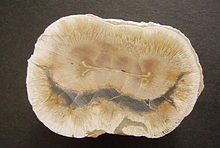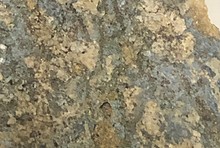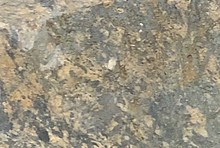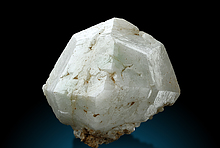Home PageAbout MindatThe Mindat ManualHistory of MindatCopyright StatusWho We AreContact UsAdvertise on Mindat
Donate to MindatCorporate SponsorshipSponsor a PageSponsored PagesMindat AdvertisersAdvertise on Mindat
Learning CenterWhat is a mineral?The most common minerals on earthInformation for EducatorsMindat ArticlesThe ElementsThe Rock H. Currier Digital LibraryGeologic Time
Minerals by PropertiesMinerals by ChemistryAdvanced Locality SearchRandom MineralRandom LocalitySearch by minIDLocalities Near MeSearch ArticlesSearch GlossaryMore Search Options
The Mindat ManualAdd a New PhotoRate PhotosLocality Edit ReportCoordinate Completion ReportAdd Glossary Item
Mining CompaniesStatisticsUsersMineral MuseumsClubs & OrganizationsMineral Shows & EventsThe Mindat DirectoryDevice SettingsThe Mineral Quiz
Photo SearchPhoto GalleriesSearch by ColorNew Photos TodayNew Photos YesterdayMembers' Photo GalleriesPast Photo of the Day GalleryPhotography
╳Discussions
💬 Home🔎 Search📅 LatestGroups
EducationOpen discussion area.Fakes & FraudsOpen discussion area.Field CollectingOpen discussion area.FossilsOpen discussion area.Gems and GemologyOpen discussion area.GeneralOpen discussion area.How to ContributeOpen discussion area.Identity HelpOpen discussion area.Improving Mindat.orgOpen discussion area.LocalitiesOpen discussion area.Lost and Stolen SpecimensOpen discussion area.MarketplaceOpen discussion area.MeteoritesOpen discussion area.Mindat ProductsOpen discussion area.Mineral ExchangesOpen discussion area.Mineral PhotographyOpen discussion area.Mineral ShowsOpen discussion area.Mineralogical ClassificationOpen discussion area.Mineralogy CourseOpen discussion area.MineralsOpen discussion area.Minerals and MuseumsOpen discussion area.PhotosOpen discussion area.Techniques for CollectorsOpen discussion area.The Rock H. Currier Digital LibraryOpen discussion area.UV MineralsOpen discussion area.Recent Images in Discussions
Mineralogical ClassificationTassieite: type-description
7th May 2007 22:13 UTCMarco E. Ciriotti Manager
• Grew, E.S., Armbruster, Th., Medenbach, O., Yates, M.G., Carson, C.J. (2007): Tassieite, (Na,�)Ca2(Mg,Fe2+,Fe3+)2(Fe3+,Mg)2(Fe2+,Mg)2(PO4)6•2H2O, a hydrothermal wicksite-group mineral in fluorapatite nodules from granulite-facies paragneiss in the Larsemann Hills, Prydz Bay, East Antarctica. Canadian Mineralogist, 45, 293-305.
Abstract:
Tassieite (IMA 2005–051), with an end-member formula NaCa2(Mg2)(Fe3+Mg)Σ2(Fe2+)2(PO4)6•2H2O, is a newly recognized Mg-dominant phosphate of the wicksite group. A representative composition derived with an electron microprobe is SiO2 0.01, P2O5 44.54, SO3 0.06, MgO 10.95, MnO 0.38, FeO 25.40 (meas.), FeO 14.93 (calc.), Fe2O3 11.63 (calc.), Na2O 1.96, CaO 11.56, SrO 0.02, Y2O3 0.26, Ce2O3 0.08, Yb2O3 0.13, UO2 0.04, F 0.04, H2O 3.78 (calc.), sum 100.34 wt% (excluding F), which gives Na0.60Ca1.96Mg2.59Mn0.05Fe2+1.98Fe3+1.39Y0.02Yb0.01S0.01P5.98O24•2H2O for 14 cations excluding Na, and 24 O; the Fe2+:Fe3+ ratio is calculated from stoichiometry, and the H2O, from ideal content. Overall, the analyses of all grains gave Na in the range 0.46–0.97 atoms per formula unit, and XMg = Mg/(Mg + Fe2+) (atom ratio) is in the range 0.45–0.77 (for tassieite: XMg > 0.5). Single-crystal X-ray diffraction gives an orthorhombic symmetry, Pbca, a 12.4595(7), b 11.5955(16), c 12.7504(7) Å, V 1842.1(3) Å3, calculated density 3.45 g/cm3, Z = 4. The mineral is isostructural with wicksite, but with the M1 site dominated by Mg. Mg is the dominant divalent octahedrally coordinated cation in the structure, which is our rationale for recognizing tassieite as a distinct species. Indexed lines in the powder pattern are 6.40(5)(002), 3.497(40)(302), 3.000(80)(114), 2.895(80)(040), 2.735(100)(420,412), 2.545(10)(224) and 2.091(30)(106). The mineral is optically biaxial +, α 1.712(2), β 1.713(2), γ 1.722(2) (589 nm), 2V (meas.) 46(1)°, 2V (calc.) 37°. Pleochroism: X dark blue, Y blue, Z light brown; absorption: X > Y >> Z. Tassieite occurs in bands of secondary fluorapatite or in pseudomorphs of stornesite-(Y) within a fluorapatite nodule in a paragneiss specimen from between Johnston Fjord and Tassie Tarn (whence the name), Stornes Peninsula, Larsemann Hills, in Antarctica. Associated minerals are stornesite-(Y), wagnerite, xenotime-(Y), monazite-(Ce), pyrite, mélonjosephite and several unidentified Ca ± Na – Mg – Fe phosphates. Larger grains of tassieite (0.5–1 mm) show crystal faces and cleavage traces, but most grains (up to 0.3 mm) are platy and anhedral or irregular in outline. Tassieite seems to have formed hydrothermally from the alteration of stornesite-(Y) and wagnerite.




Mindat.org is an outreach project of the Hudson Institute of Mineralogy, a 501(c)(3) not-for-profit organization.
Copyright © mindat.org and the Hudson Institute of Mineralogy 1993-2024, except where stated. Most political location boundaries are © OpenStreetMap contributors. Mindat.org relies on the contributions of thousands of members and supporters. Founded in 2000 by Jolyon Ralph.
Privacy Policy - Terms & Conditions - Contact Us / DMCA issues - Report a bug/vulnerability Current server date and time: April 23, 2024 13:25:43
Copyright © mindat.org and the Hudson Institute of Mineralogy 1993-2024, except where stated. Most political location boundaries are © OpenStreetMap contributors. Mindat.org relies on the contributions of thousands of members and supporters. Founded in 2000 by Jolyon Ralph.
Privacy Policy - Terms & Conditions - Contact Us / DMCA issues - Report a bug/vulnerability Current server date and time: April 23, 2024 13:25:43











